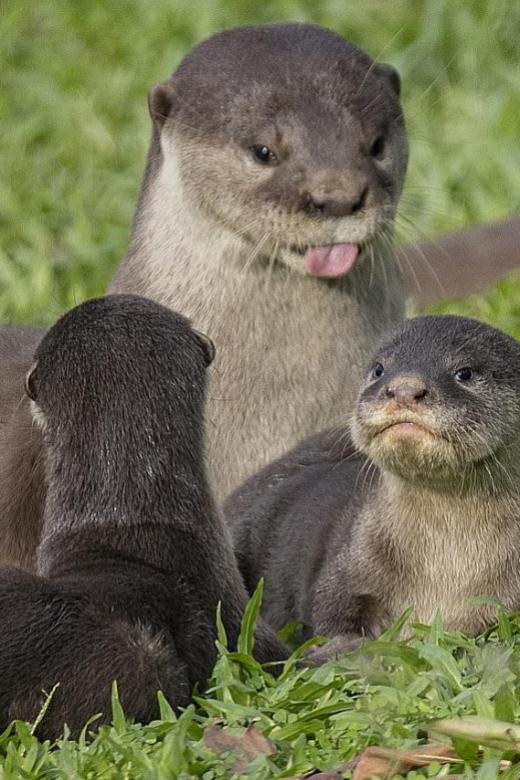Local otters offspring of two different species
The descendants of small-clawed females and smooth-coated males are first known case of wild otter hybrids
The smooth-coated otters entrancing Singapore are most probably the descendants of two different species caught up in an unconventional romance.
Research indicates that the creatures could be the result of a fraught union.
Picky small-clawed otter females had initially rejected smooth-coated males, but their fruitless search for suitable mates of their own species eventually led them back to the smooth-coated males.
Researchers do not know if this original union occurred in nature or captivity - that is the subject of further research - but it is quite the story behind the world's first known case of wild otter hybrids.
Research assistant Meryl Theng and her team made the discovery that was published last year, when her team studied smooth-coated otter samples from all over the world in order to understand their population movements.
They also examined the dung and skin of 18 samples from five locations around Singapore, with surprising results.
"We questioned what could have gone wrong. Was spraint (dung) from the wrong species collected? Was there contamination of small-clawed otter DNA?" said Ms Theng, 28.
Only after they verified that they did not make any mistakes, and after another colleague got the same results, did they realise that they were on to something.
Singapore has two species of otters. Smooth-coated ones grow up to 1.2m long and 11kg in weight. They are the more familiar ones here and have been increasingly seen since the 1990s in places such as Sungei Buloh, Bishan-Ang Mo Kio Park and Gardens by the Bay.
Small-clawed otters weigh around half as much, at 5kg, and in recent decades have been seen only on offshore islands such as Pulau Tekong and Pulau Ubin.
Ms Theng said there are several reasons why the two species could have bred with each other, the top contender being the "picky female" theory.
Singapore's otters do not look like hybrids because their genes are not split equally between the smooth-coated and small-clawed otters.
Rather, the original offspring of the two species continued breeding with smooth-coated otters across several generations, meaning that the descendants did not look like small-clawed otters at all, though they kept some of their genes, said Ms Theng.
Ms Theng said the two otter species are more genetically similar than previously thought and so should be recognised as such by taxonomists.
Biology lecturer N. Sivasothi, who heads community group OtterWatch, said the research raises interesting questions.
He said: "Should a threatened species be protected if there is evidence of hybridisation? Should hybrids be allowed to persist if they fill an ecological role?
"This will be discussed by the otter specialist group of the International Union for Conservation of Nature's Species Survival Commission at a proposed workshop for South-east Asian otter researchers."
Get The New Paper on your phone with the free TNP app. Download from the Apple App Store or Google Play Store now




